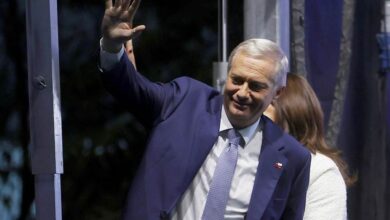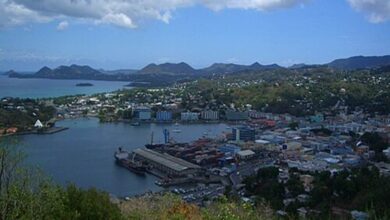The political elite of various parties voted in unison to remove Pedro Castillo after the attempted dissolution of Congress, however, the people who voted for him have not been heard.

Photo: TW-PedroCastilloTe
LatinAmerican Post | Santiago Gómez Hernández
Escucha este artículo
Leer en español: Simpatizantes de Pedro Castillo, la voz no escuchada en Perú
Peru never ceases to amaze. For those who thought that a president ousted and imprisoned, after a failed self-coup, was normal for the Inca country, massive protests (with several deaths) increase the tension. Thousands of demonstrators in favor of ousted President Pedro Castillo have taken over many cities and are keeping the entire country on alert.
The South American country is currently experiencing a series of protests that put the future of the new president, Dina Boularte, at risk. There have been closures of numerous highways and two airports (Arequipa and Cusco) and there have been many clashes with the police, which have left more than 7 dead. Although the protests are taking place in various parts of the country, they are concentrated in the south, Castillo's political stronghold.
How can this happen when President Castillo attempted a coup, was under investigation for corruption and had low popularity? The answer is simple, if there is another institution with a worse image in Peru than the President of the Republic, it is the Congress. A political change between the two was destined to receive popular rejection. Within Congress, there are several politicians with very little support and who Peruvians feel have prevented Castillo from being able to govern.
A Call for Elections in the Future
The new president, Dina Boularte, advocated the difficult situation she was facing and, for this reason, she wanted to gain legitimacy by calling early elections. However, instead of keeping the initial date for 2026 (his initial idea), he ended up moving them forward to 2024. Despite the fact that logistics and budget are necessary to be able to make a peaceful transition, close to a year and a half of mandate to a presidency that was not elected by popular vote (although she shared the ticket as Castillo's vice president) sounds like too long.
But in Peru, it is a familiar scenario. Something similar happened in the last months of the government of former President Martín Vizcarra. Vizcarra himself had remained as head of government when he was vice president of Pedro Pablo Kuczynski, who had to resign due to corruption accusations. With PPK's resignation, his deputy took office and despite maintaining fierce opposition in the legislature, it lasted a little over two years, until Congress once again dismissed the chief executive.
Also read: How Much Should The Salary Increase After A Year Of Inflation?
With the departure of Vizcarra, Manuel Merino, of the party called Acción Popular and president of Congress, took over as head of state. People also took to the streets, especially in Lima, and called for Merino's immediate resignation. After this, Francisco Sagasti of the Partido Morado arrived, (who in turn had replaced Merino as president of Congress) and became president, promising a call for elections in less than 6 months.
This seems to be the same scenario that Peru repeats today. An ousted president, a vice president who assumes the mandate and widespread protests in various regions of the country.
This is why several of the protesters ask for an advance in elections and that the electoral call be short-term and that both the president and Congress can be elected. The institutional crisis in Peru cannot be solved only with the removal of the president, but with a serious commitment to govern and let govern without partisan interests. The call to elect a government again is not the solution, the change within the fragmentation of parties and the struggle for power from the legislature must yield to the winner of the presidential elections. Likewise, the person elected must also govern by uniting efforts and movements and not in the sectarianism of his party. No party in Peru accumulates the majority of voters, and this shows that a Government of National Unity must be created.
However, the problem is even bigger. Early elections may calm the current discontent, but the demonstrations are just a sample of the social crisis in Peru. The regions saw in Castillo a president close to them and in Lima, a city far from the countryside and with “racist” interests, they saw the need not allow a humble man from the countryside to govern. Whether true or not, it is an obvious example of the structural issues that Peru has tried to hide under the rug, but which tell a story that most Latin countries share.
Now fate has given Boularte, the first female president of Peru, the opportunity to be the one who, with her actions, knows how to defuse this time bomb or let it explode in her hands. The decisions that you make in the coming weeks may leave you in the recent history of Peru in golden letters or in greater oblivion, as was Merino or Sagasti.




